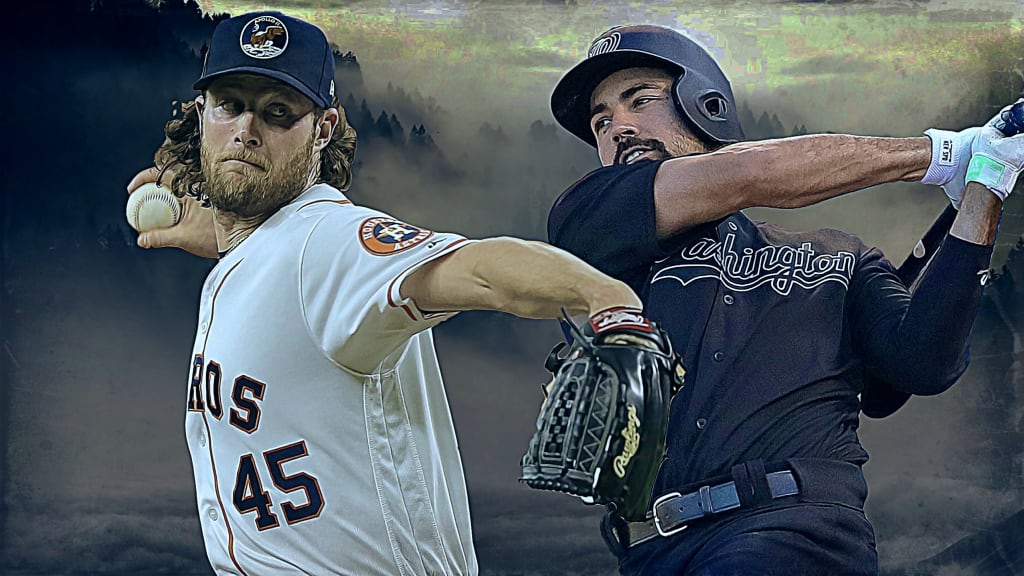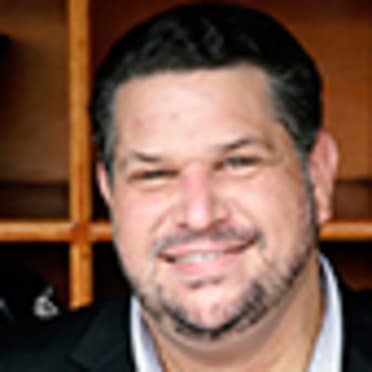
The Astros' Gerrit Cole and the Nationals' Anthony Rendon stand out as the top two free agents on this winter’s market. But which one will be more highly sought-after by clubs around the Majors?
We posed that question to a half-dozen Major League front-office executives, though the responses didn’t offer much clarity.
“I’d guess Cole,” one National League executive said. “Nobody ever has enough pitching.”
Several executives made similar points, noting that every team could use an arm like Cole’s atop its rotation, while many will not be seeking a third baseman in the offseason, “even one as good as Rendon,” the NL exec said.
“People go nuts for pitching,” an American League executive said. “I expect Cole to be at the top of that list.”
Position players vs. pitchers
Cole might be in higher demand in terms of interested teams, but the consensus is that Rendon could very well cash in with a bigger deal. There have been 11 contracts in baseball history totaling at least $225 million, all of them going to position players.
“I’d always guess a young position [player will get paid more than] a pitcher no matter who it is,” an NL general manager said.
Four of the next five biggest deals belong to starting pitchers: David Price (seven years, $217 million), Clayton Kershaw (seven years, $215 million), Max Scherzer (seven years, $210 million) and Zack Greinke (six years, $206.5 million).
All of those were signed between 2014-16; since then, Stephen Strasburg’s seven-year, $175 million extension with the Nationals represents the largest pitching deal handed out by a club. Patrick Corbin’s six-year, $140 million pact with Washington last offseason is the biggest free-agent deal given to a pitcher over the past three offseasons.
Bryce Harper (13 years, $330 million) and Manny Machado (10 years, $300 million) received the two largest deals last offseason, which at the time were the No. 1 and 3 biggest contracts in the game’s history before Mike Trout’s 12-year, $426.5 million extension established a new ceiling.
The Arenado comp
Given Rendon’s age (he turned 29 in June) and the fact that he missed significant time in the Minors in 2012 (ankle injury) and 2015 (knee), it seems like a huge stretch to imagine him getting a deal as long as Harper's or Machado's, but what about Nolan Arenado's? The Rockies' All-Star third baseman signed an eight-year, $260 million extension earlier this year entering his age-28 season.
Arenado’s $32.5 million average annual value would seemingly be the benchmark for Rendon and his agent, Scott Boras. Based on those numbers, that would put him somewhere in the $195 million to $230 million range for a six- or seven-year deal.
The NL GM is skeptical that Rendon -- whose 2019 season has been easily the best of his career -- will come close to Arenado in terms of years and total dollars.
“I don’t know,” the NL GM said. “He’ll be 30 [next summer] with a long injury history.”
Arenado is considered the preeminent third baseman in the game, but his numbers at Coors Field (.991 OPS vs. .798 on the road) might be enough to make some consider whether Rendon should earn more than his Colorado counterpart.
Rendon’s home-road splits are relatively even (.870 OPS at home, .853 on the road), which works in his favor, but he has reached the 150-game mark only twice in his career and once since 2015. However, after left knee and quad ailments cost him half of that 2015 campaign, he hasn’t missed significant time in any season since, with 136 games played in 2018 his low-water mark in that span. Still, for comparison’s sake, Arenado is on pace to exceed 150 games played for the fifth straight season.
“Rendon will be positioned as a far superior offensive player, but Arenado is undeniably a better defender,” an AL GM said. “Both are very good on offense, though I would give that edge to Rendon. I will take the under on $260 million.”
Cole a rare ace
But this isn’t about Rendon vs. Arenado. It’s about whether Rendon or Cole -- taken five picks apart in the 2011 Draft, with Cole at No. 1 overall -- should be considered the crown jewel of the impending free-agent class.
“I bet Cole is more sought-after even though Rendon is likely more valuable,” another NL executive said. “Teams are all looking for No. 1 starting pitchers, and starting pitchers are the one part of the free-agent market that hasn’t had a big negative value shift of late.”
“They’ll be pretty close,” a fourth NL decision-maker said. “I would lean Rendon being more expensive just based on what the other bats are getting these days.”
Teams have seemingly been reluctant to dole out long-term deals to free-agent starting pitchers in recent years; aside from Corbin, only Yu Darvish (six years, $126 million), Nathan Eovaldi (four years, $68 million), Yusei Kikuchi (four years, $56 million) and Alex Cobb (four years, $57 million) have signed deals longer than three years during the past two offseasons.
Cole, who turned 29 last week, has reestablished himself as one of the premier pitchers in the game during his two years in Houston, going 32-10 with a 2.75 ERA and 568 strikeouts in 392 2/3 innings. Two execs said Cole will likely seek a deal that tops both Price’s record total and Justin Verlander’s $33 million average annual value, which stands as the highest ever for a pitcher. (Greinke’s deal technically averages $34.4 million, though deferments lower it below Verlander’s AAV.)
Committing to a long-term deal with a pitcher can be more dangerous given the fragility of even the best arms. The AL executive believes Rendon will land a bigger deal in terms of years and guaranteed dollars, though Cole’s AAV should wind up being higher. A second AL exec termed Rendon “a safer investment” than Cole.
Both players are represented by Boras, so barring an unforeseen extension for Rendon with the Nationals, the pair could find themselves without teams until February, just as Harper, Eric Hosmer and J.D. Martinez have during the past two years.
“Unless their agent changes his standard operating procedure, it stands to reason that they will not sign until deep into the offseason, or even into Spring Training,” the AL GM said. “A finite number of teams will be able to keep the requisite amount of funds in abeyance long enough to sign either player.”
The one thing everybody seems to agree on when it comes to Rendon and Cole? They’re both going to get paid quite handsomely.
“They are both elite,” a second NL GM said. “Anything can happen.”
